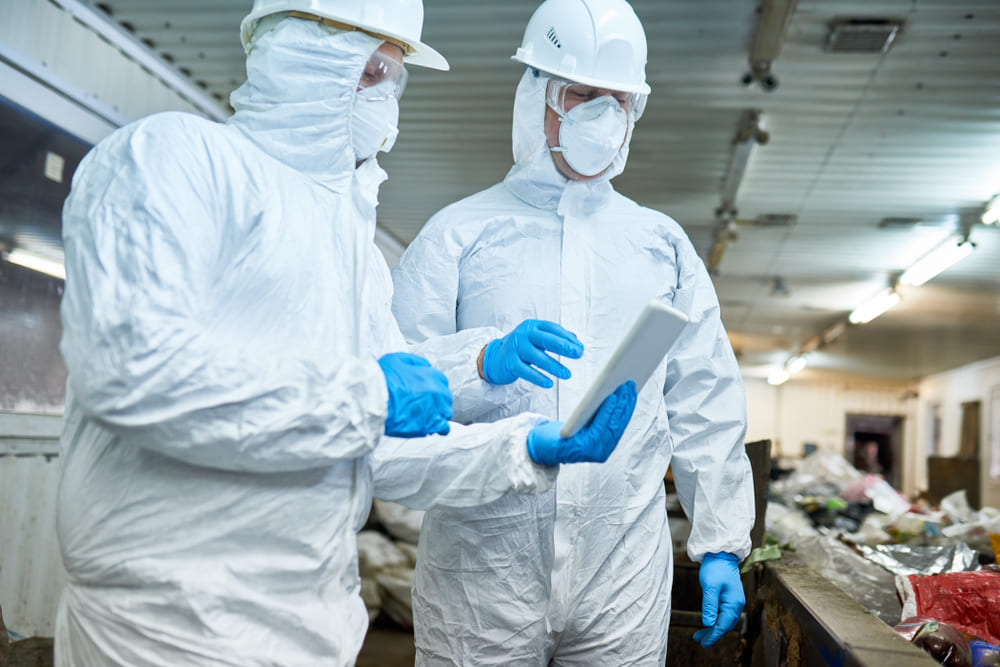
What is COSHH? COSHH is legislation designed to protect workers from hazardous substances.
COSHH regulations apply to many materials, including everyday cleaning products, paints and even wood dust.
Because it regulates the safe use of such a long list of substances, workers may operate under COSHH without fully understanding its aims or implications.
If you’re unsure whether COSHH affects your organisation or role, our guide will cover what you need to know.
What Does COSHH Mean?
COSHH stands for the Control of Substances Hazardous to Health.
It’s legislation that regulates the use of hazardous substances in all workplaces to protect workers from potential harm.
The first version was passed into law in 1988, coming into force the following year. It has since gone through several iterations, the most recent in 2002. It is enforced by the Health and Safety Executive (HSE), which also offers an overview of COSHH for employers.
What Substances are Considered Hazardous?
A substance is considered hazardous if, in any form, it has the potential to cause harm. This definition includes:
- Solids
- Liquids
- Gases
- Dusts
- Fibres
- Microscopic organisms
Hazardous substances are used or generated in a significant number of workplaces. If they are present, you must know of potential harm caused by physical contact, inhalation or ingestion. Substances are also considered hazardous if they’re flammable.
Identifying the substances and materials in your workplace that can cause harm is necessary.
How to Check
You can check whether a substance is considered hazardous and in what way by:
- Referring to the product information and safety data sheet (if provided)
- Contacting the supplier or distributor
- Searching the HSE’s website
Substances Outside of COSHH Regulation
COSHH legislation omits three notable harmful substances:
- Lead
- Asbestos
- Radioactive material
All of these are significant enough to be governed by their own legislation.
Control of Hazardous Substances
The HSE notes that when hazardous substances are “used properly”, there’s virtually no risk of harm. COSHH was written to explain how you can achieve this.
As with most health and safety issues, minimising risk is a two-part process. First, you must complete a risk assessment to determine the hazards and who might be harmed. Then, you use those findings to implement control measures.
You need to return to your risk assessment regularly, however. Reviewing your control measures and checking whether they’re adequate is essential.
Risk Assessment
All risk assessments follow an established procedure, which we’ve covered in detail. You can break the process down into five steps:
- Identify the hazards
- Assess the level of risk (how likely harm is to happen and how severe it might be)
- Establish control measures to eliminate or reduce risk to an acceptable degree
- Record your findings
- Review the control measures
This five-step process applies to COSHH risk assessments. To evaluate risk levels, you must consider both the substances being used and the tasks they’re involved in. Certain activities are inherently more dangerous because you’re more likely to inhale a hazardous substance or get it on your skin.
Health Surveillance
Employers are required to monitor the well-being of their workers under COSHH. This monitoring may necessitate health surveillance.
It’s essentially a scheme of repeated health checks to detect diseases associated with hazardous substances as early as possible to reduce potential harm.
Health surveillance is necessary in workplaces where workers are still at risk from hazardous substances despite implementing control measures. Employers are obligated to establish a health surveillance scheme if:
- Workplace hazardous substances are closely linked to particular diseases
- It’s possible to reduce the potential harm by detecting those diseases early
- Workplace conditions make it likely workers will develop a specific disease
Health surveillance schemes should be set up with help from a competent occupational health specialist. They may require the involvement of an HSE-approved doctor, known as an appointed doctor.
Although health surveillance occurs after exposure, it should still be considered a preventive measure, as results should be used to avoid further harm. Early disease detection should improve outcomes for any affected workers. At the same time, employers should be able to use the findings to improve existing control measures.

Local Exhaust Ventilation (LEV)
LEV systems must be used in workplaces where dust and fumes, which are both considered hazardous substances, are generated.
Features vary, but all LEV systems extract harmful materials from their point of origin, reducing the risk of inhalation.
Deciding on the right LEV system for a workplace can be difficult, so the HSE offers guidance to employers.

Personal Protective Equipment (PPE)
PPE is commonplace in health and safety legislation, and COSHH is no exception. PPE should only be offered as a control measure after all other options have been considered or implemented, however.
And PPE is only adequate if it’s in good condition and used by workers correctly, so employers must:
- Provide all PPE found to be needed by the risk assessment
- Maintain it in good working order
- Train workers on its intended use
- Ensure it’s being used effectively

COSHH Training
COSHH regulations are extensive and require complex safety measures, making compliance difficult. Particularly if you’re new to COSHH.
Our online COSHH Training course covers the principles of the legislation. It examines the role of both employers and workers in preventing harm caused by hazardous substances. It also covers the risk assessment process and offers practical steps to improve safety per COSHH guidance.





















































































































































































































































































































































































































































































































































































































































































































































